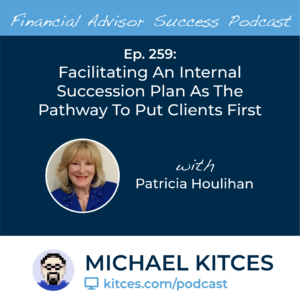Enjoy the current installment of “Weekend Reading for Financial Planners” - this week’s edition kicks off with the news that the Biden administration will extend the moratorium on Federal student loan payments until May 1, giving some relief to borrowers impacted by the continuing effects of the pandemic (and softening the blow that January’s lapse in monthly Child Tax Credit payments, alongside the original February 1 date when loan payments would have restarted without the extension, was expected to have on household balance sheets).
Also in industry news this week:
- Research shows that, after years of being slow to incorporate ETFs into their clients’ portfolios, investment advisors have actually passed retail investors (and institutions) as the largest buyers of ETFs
- The Department of Labor has issued guidance for brokers to freshly evaluate the potential conflicts of interest that their payout grids present (especially grids that provide retroactively higher payouts upon reaching the next threshold)
From there, we also have several articles discussing retirement planning:
- New research shows that the pace of the observed decline in spending over the course of a retirement can differ based on a retiree’s wealth and health, suggesting that while spending usually declines for retirees in their later years, the typical clients of advisors may actually maintain more level retirement spending after all?
- How advisors can help younger clients balance saving for the future with enjoying life today and not ‘over-saving’
- How a new tool that helps individuals to search for the best places to live in the U.S. (for them) based on a range of criteria could help advisors better estimate a client’s potential expenses in retirement
We also have a number of articles on advisor marketing:
- Why ‘social proof’ is an important part of attracting new clients, and how advisors can use testimonials and online platforms to generate it
- Why advisors might not be getting as many referrals as they would like from Centers of Influence, and how they can get more
- Why establishing and communicating company culture is important to attract and retain the ‘right’ clients and employees (and should deliberately repel the wrong ones!)
We wrap up with three final articles, all about how advances in technology have the potential to change the way we live and work in the future:
- A primer on the buzz around “Web3”, and why, despite the legitimate concerns about its widespread adoption, it’s worth keeping an eye on how blockchain-based Web3 technologies continue to evolve
- Why, after decades of Microsoft Word as the default document editor for many organizations, competitors are now springing up to compete (and change the way we create and edit documents in the online era)
- How the mass adoption of telecommuting could, despite its short-term benefits, pose long-term threats for knowledge workers who may now face more global competition for their jobs
Enjoy the “light” reading!

 Welcome back to the 260th episode of the Financial Advisor Success Podcast!
Welcome back to the 260th episode of the Financial Advisor Success Podcast! Welcome back to the 259th episode of the Financial Advisor Success Podcast!
Welcome back to the 259th episode of the Financial Advisor Success Podcast!
